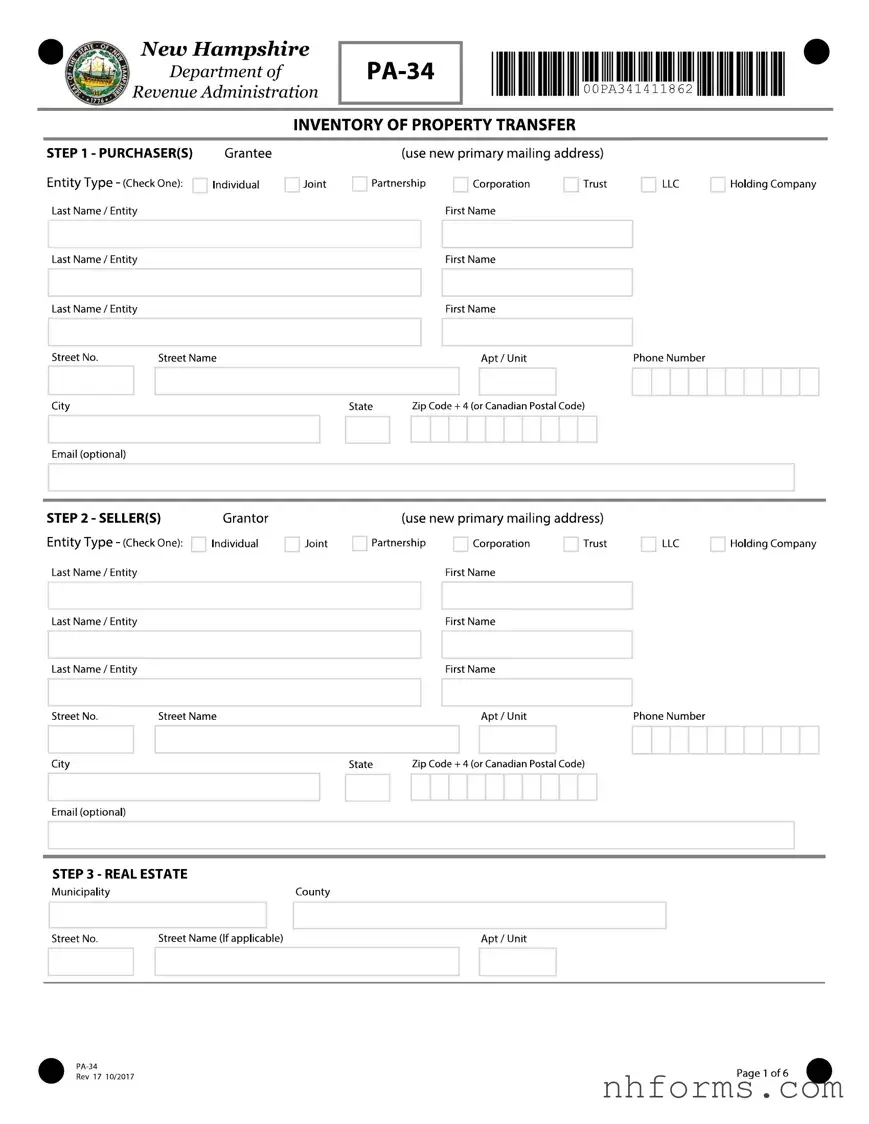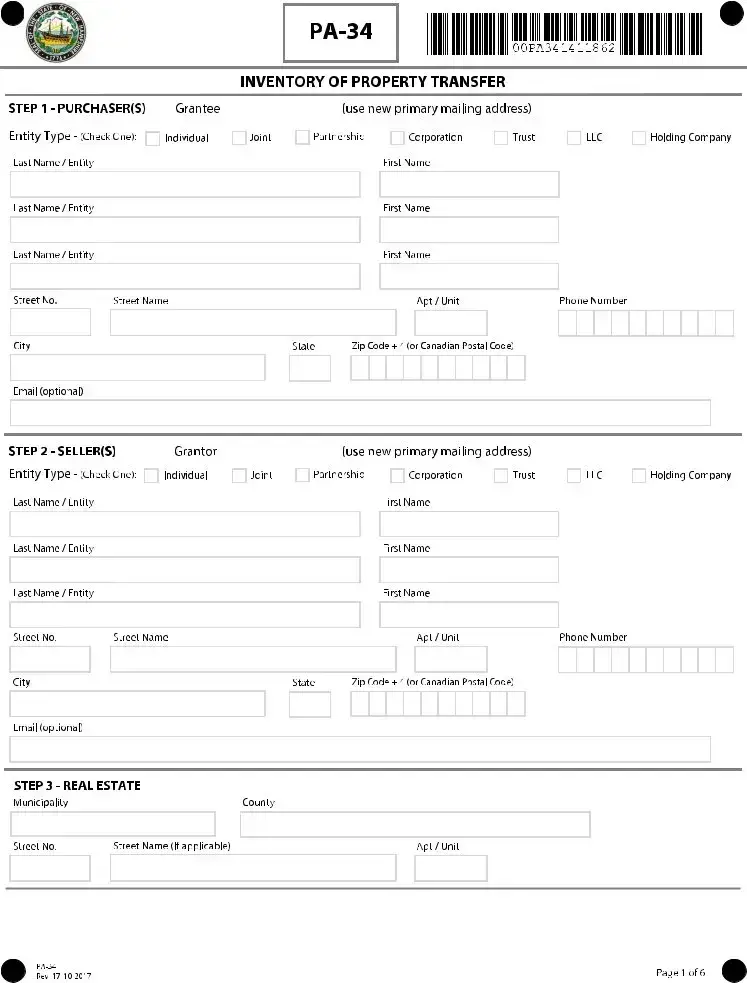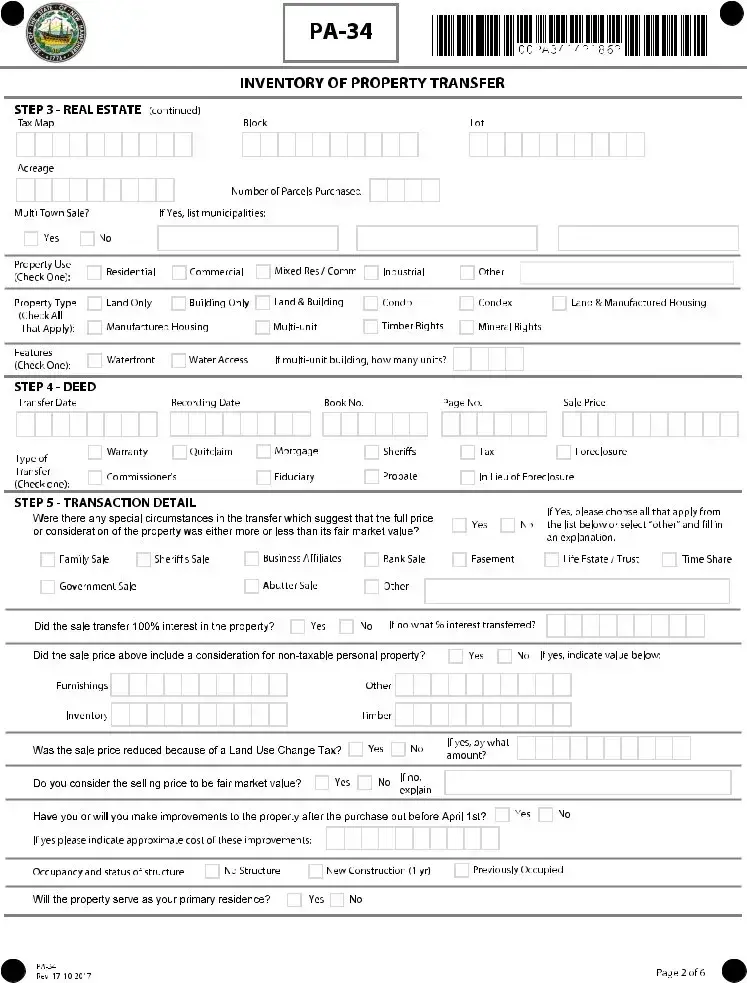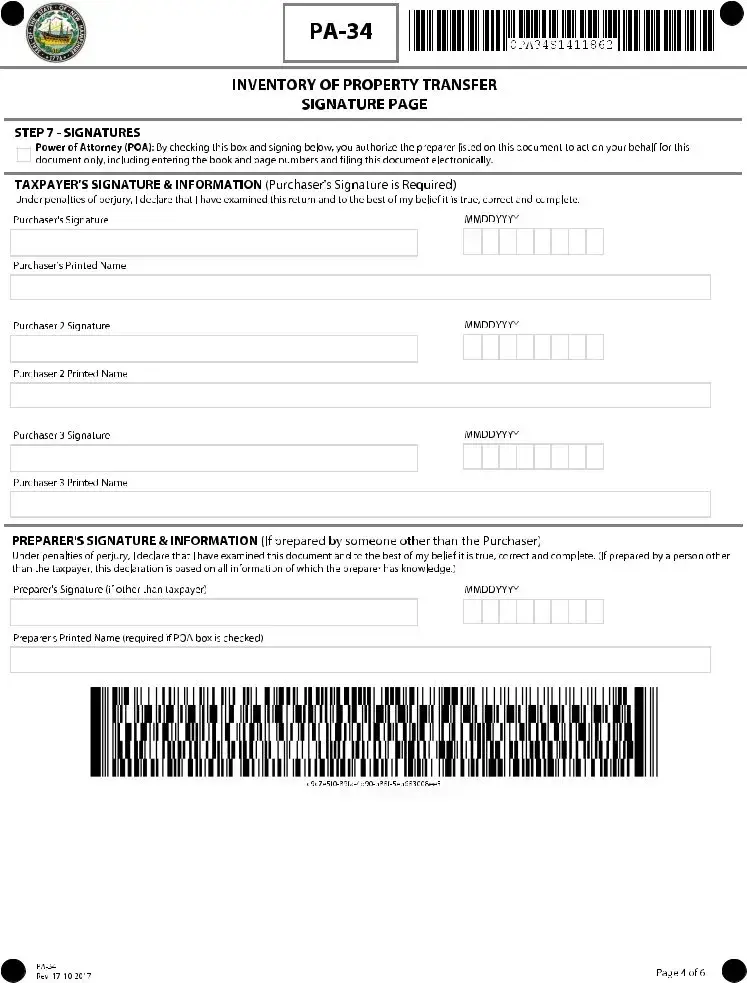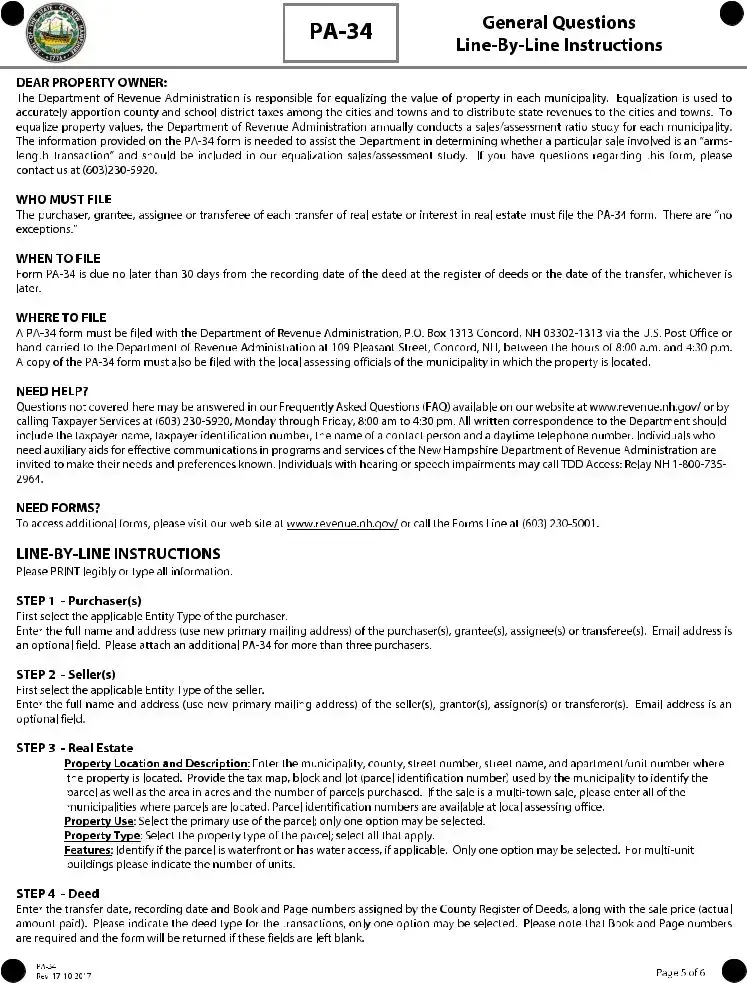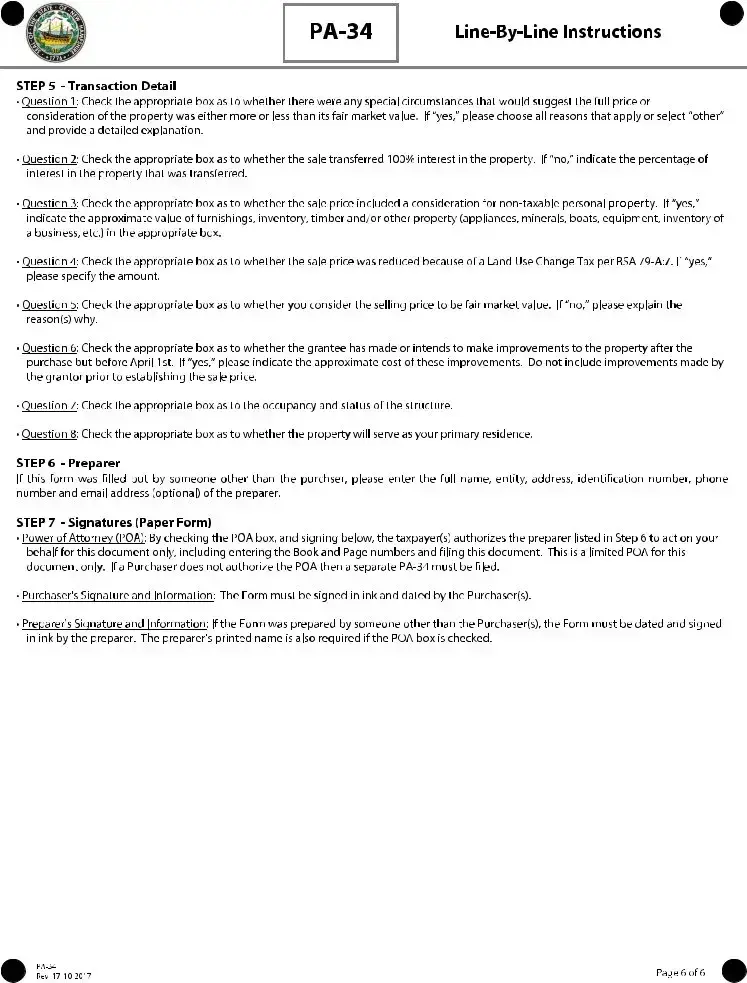What is the NH PA-34 form?
The NH PA-34 form, also known as the "Inventory of Property Transfer," is a document required by the New Hampshire Department of Revenue Administration. It's used to report the transfer of real estate within the state. This form helps in the accurate assessment of property taxes and ensures all necessary details regarding property transfers are officially recorded.
Who needs to file the NH PA-34 form?
Any individual or entity that transfers real estate located in New Hampshire must file the NH PA-34 form. This includes both sellers and buyers involved in the property transfer. It's crucial for ensuring that the state's records reflect the current ownership and valuation of the property.
When is the NH PA-34 form due?
The NH PA-34 form must be filed within 30 days following the recording of the deed or the finalization of the property transfer, whichever comes first. Timely filing is important to avoid penalties and ensure compliance with state requirements.
Where can I find the NH PA-34 form?
The form is available on the New Hampshire Department of Revenue Administration's website. You can download the form directly from their site and either fill it out electronically or print it and fill it out by hand.
What information is required on the NH PA-34 form?
The form requires detailed information about the property transfer, including the date of the transfer, the names and addresses of both the seller and buyer, the property address, the sale price, and the property's assessment values. Accurate and complete information is crucial for the form's acceptance.
How do I submit the NH PA-34 form?
Once completed, the form can be submitted either electronically through the New Hampshire Department of Revenue Administration's online system or via mail to their office. The choice of submission method depends on your preference and the specific guidelines provided by the department.
Is there a penalty for filing the NH PA-34 form late?
Yes, there are penalties for late filing. These can include fines and interest charges on any unpaid taxes deemed due as a result of the property transfer. It's essential to file on time to avoid these additional costs.
Can I get help if I have questions about filling out the NH PA-34 form?
Yes, the New Hampshire Department of Revenue Administration provides assistance for those filling out the NH PA-34 form. You can contact their office directly via phone or email for help with any questions or concerns about the form or the filing process.
